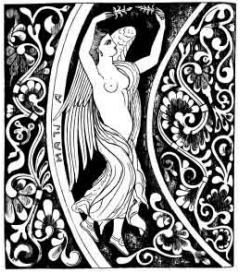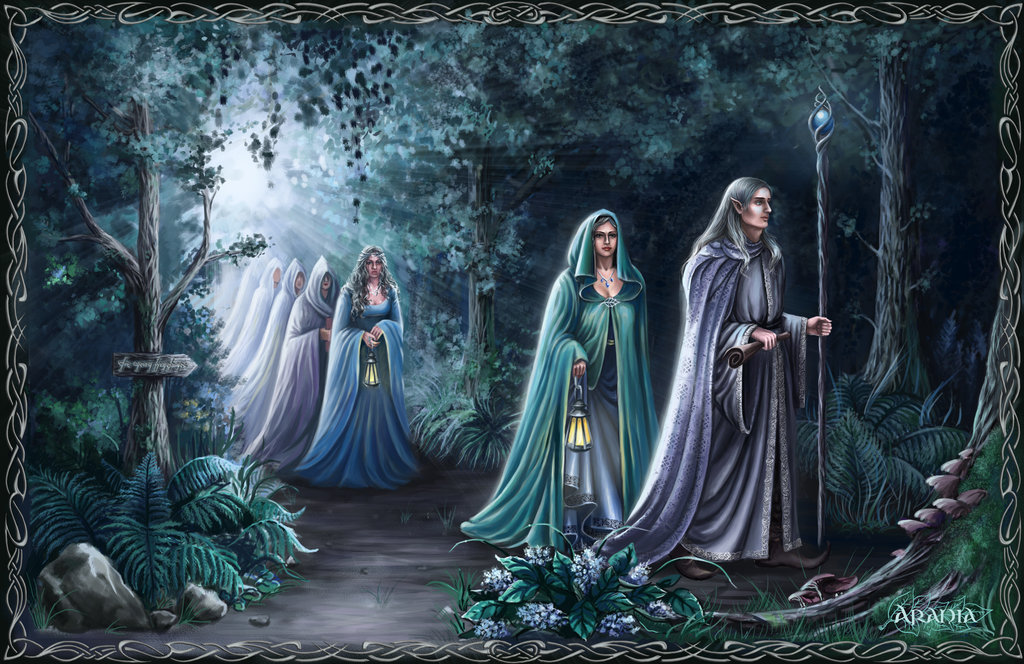Choose Your Love Deity for Valentine’s Day
Written by Heroes and Mortals on January 27, 2022
Valentine’s Day is coming up which means it’s time to make a few sacrifices to your preferred love deity to secure the embrace of your desire. Finding a deity is difficult, there a lot of them, and while most cultures have their own, we live in a global community now and it’s a good time to branch out. We thought we’d make it easy for you by selecting a few from this Wikipedia article, but read the full list, there are a lot of interesting choices and as always, when choosing a deity, choose wisely.

Oshun
Goddess of luxury and pleasure, sexuality and fertility, beauty and love, the river and fresh water.
Ọṣun, is an Orisha, a spirit/deity/goddess that reflects one of the manifestations of the Yorùbá Supreme Being in the Ifá oral tradition and Yoruba-based religions of West Africa. She is one of the most popular and venerated Orishas and an important river deity among the Yorùbá people. She is the goddess of divinity, femininity, fertility, beauty and love, is connected to destiny and divination, and is the patron saint of the Osun River in Nigeria.
According to the Ifa Literary Corpus, Ọṣun was the only female Irunmole (primordial spirit) sent to assist Shango to create the world by Olodumare. The other spirits that were sent began the work and ignored Ọṣun. Ọṣun went to her partner Shango for guidance. Two versions of this story exist. One claims that female spirits were tempted to take matters into their own hands, but all of their creative attempts failed because they acted without male spiritual leadership. Another version, and this one more consistent with the beginning of the story, claims that the male spirits attempted to make the world without female influence, and this exclusion is what caused the world to fail. The former version appears to reflect a patriarchal influence on orisha narratives that sprang up with the influence of Abrahamic religions, while the second is more in line with traditional orisha beliefs, which revere feminine power.

Inanna/Ishtar
Goddess of sex, love, beauty, wine and war.
Inanna is an ancient Mesopotamian goddess associated with love, beauty, sex, war, justice and political power. She was originally worshiped in Sumer under the name “Inanna”, and was later worshiped by the Akkadians, Babylonians, and Assyrians under the name “Ishtar”. She was known as the “Queen of Heaven” and was the patron goddess of the Eanna temple at the city of Uruk, which was her main cult center. She was associated with the planet Venus and her most prominent symbols included the lion and the eight-pointed star.
The Sumerians worshipped Inanna as the goddess of both warfare and love. Unlike other gods, whose roles were static and whose domains were limited, the stories of Inanna describe her as moving from conquest to conquest. She was portrayed as young and impetuous, constantly striving for more power than she had been allotted. Although she was worshipped as the goddess of love, Inanna was not the goddess of marriage, nor was she ever viewed as a mother goddess, but as a love goddess, she was commonly invoked in incantations.

Freyja
Goddess of love/sex, beauty, seiðr, war, and death.
In Norse paganism, Freyja is a goddess associated with love, beauty, fertility, sex, war, gold, and seiðr (magic for seeing and influencing the future). Freyja is the owner of the necklace Brísingamen, rides a chariot pulled by two cats, is accompanied by the boar Hildisvíni, and possesses a cloak of falcon feathers.
Freyja rules over her heavenly field, Fólkvangr, where she receives half of those who die in battle. The other half go to the god Odin’s hall, Valhalla. Within Fólkvangr lies her hall, Sessrúmnir. Freyja assists other deities by allowing them to use her feathered cloak, is invoked in matters of fertility and love, and is frequently sought after by powerful jötnar who wish to make her their wife.
Freyja is attested in the Poetic Edda, compiled in the 13th century from earlier traditional sources; in the Prose Edda and Heimskringla, composed by Snorri Sturluson in the 13th century; in several Sagas of Icelanders; in the short story “Sörla þáttr”; in the poetry of skalds; and into the modern age in Scandinavian folklore.

Kurupi
God of sexuality and fertility.
Kurupira is a figure in Guaraní mythology. He is one of the seven monstrous children of Tau and Kerana, and as such is one of the central legendary figures in the region of Guaraní speaking cultures. He is also one of the few figures still prominent in the modern culture of the region.
Kurupi is said to be short, ugly, and hairy though his most distinctive feature, however, was a humongous penis that was ordinarily wound several times around his waist like a belt. Due to this feature, he was at one time revered by the Guaraní as the spirit of fertility. Kurupi is often blamed for unexpected or unwanted pregnancies. His penis is said to be prehensile, and owing to its length he is supposed to be able to extend it through doors, windows, or other openings in a home and impregnate a sleeping woman without even having to enter the house. Kurupi was a scapegoat used by adulterous women to avoid the wrath of their husbands, or by single women to explain their pregnancies. Children fathered by the Kurupi were expected to be small, ugly and hairy much like their father.
Hedylogos
God of sweet talk and flattery.
In Greek mythology, Hedylogos or Hedylogus was the god of sweet-talk and flattery and one of the winged love gods called the Erotes. He is not mentioned in any existing literature, but he is depicted on ancient Greek vase paintings. A surviving example on a red-figure pyxis from the late 5th century BC shows Hedylogos alongside his brother Pothos drawing the chariot of Aphrodite.

Albina
Goddess of the dawn and protector of ill-fated lovers.
Albina or The White Goddess is a goddess (possibly Etruscan) associated with the dawn and the founding of Great Britain. Robert Graves’ essay “The White Goddess” describes Albina as of one of fifty sisters who named Albion.
According to Charles Godfrey Leland, author of the 1892 collection of folklore “Etruscan Roman Remains in Popular Tradition”, Albina was an Etruscan goddess of light and ill-fated lovers. The accounts of Albina were obtained by word of mouth from local and often illiterate peasants, some of whom were considered witches or “Strega”. Possibly a combination of other deities such as Alpanu and Aurora, Albina is described as a beautiful flying woman (or fairy) and associated with light.
Tu Er Shen
A deity who oversees love between homosexual men.
Tu’er Shen (The Rabbit God), is a Chinese deity who manages love and sex between homosexual people. His name literally means “rabbit deity”.
In a folk tale from 17th century Fujian, a soldier is in love with a provincial official, and spies on him to see him naked. The official has the soldier tortured and killed, but he returns from the dead in the form of a leveret (a rabbit in its first year) in the dream of a village elder. The leveret demands that local men build a temple to him where they can burn incense in the interest of “affairs of men”.

Kamadeva and Rati
Hindu god of human love or desire and Rati, consort of Kama, goddess of love, carnal desire, lust, passion and sexual pleasure.
Kama is the Hindu god of human love or desire, often portrayed along with his female counterpart Rati. Kamadeva was married to Ratī, the daughter of Daksha, created from his sweat. Rati is a minor character in many traditional stories involving Kamadeva. Kama often takes part in Puranic battles with his troops of soldiers.
The deity of Kamadeva along with his consort Rati is included in the pantheon of Vedic-Brahmanical deities such as Shiva and Parvati. In Hindu traditions for the marriage ceremony itself, the bride’s feet are often painted with pictures of Suka, the parrot vahana of Kamadeva. The religious rituals addressed to him offer a means of purification and re-entry into the community. Kamadeva appears in many stories and becomes the object of devotional rituals for those seeking health, physical beauty, husbands, wives, and sons.
Aizen Myō-ō or Rāgarāja
A Buddhist deity who transforms worldly lust into spiritual awakening.
Originally a Hindu deity, Rāgarāja is known to transform worldly lust into spiritual awakening. Rāgarāja (Sanskrit: रागराज) is a deity venerated in the Esoteric and Vajrayana Buddhist traditions. He is especially revered in Chinese Esoteric Buddhism in Chinese communities as well as Shingon and Tendai in Japan.
He is portrayed as a red-skinned man with a fearsome appearance, a vertical third eye and flaming wild hair that represents rage, lust and passion. There are two, four or six armed incarnations of Rāgarāja but the six-armed one is the most common. Those six arms bear a bell which calls one to awareness; a vajra, the diamond that cuts through illusion, an unopened lotus flower representing the power of subjugation, a bow and arrows (sometimes with Rāgarāja shooting the arrow into the heavens), and the last one holding something that we cannot see (referred to by advanced esoteric practitioners as “THAT”).

Xochiquetzal
Goddess of sex and beauty.
In Aztec mythology, Xochiquetzal was a goddess associated with fertility, beauty, and love, serving as a protector of young mothers and a patroness of pregnancy, childbirth, and the crafts practiced by women such as weaving and embroidery.
Unlike several other figures in the complex of Aztec female earth deities connected with agricultural and sexual fecundity, Xochiquetzal is always depicted as an alluring and youthful woman, richly attired and symbolically associated with vegetation and in particular flowers. By connotation, Xochiquetzal is also representative of human desire, pleasure, and excess, appearing also as patroness of artisans involved in the manufacture of luxury items.
We’re going to recommend maybe you don’t worship Kurupi(!) but no matter whom or what you choose to love on Valentine’s Day, we hope you enjoy each other and have a pleasant day.
All images and content courtesy of their respective Wikipedia articles linked to from https://en.wikipedia.org/wiki/List_of_love_and_lust_deities





